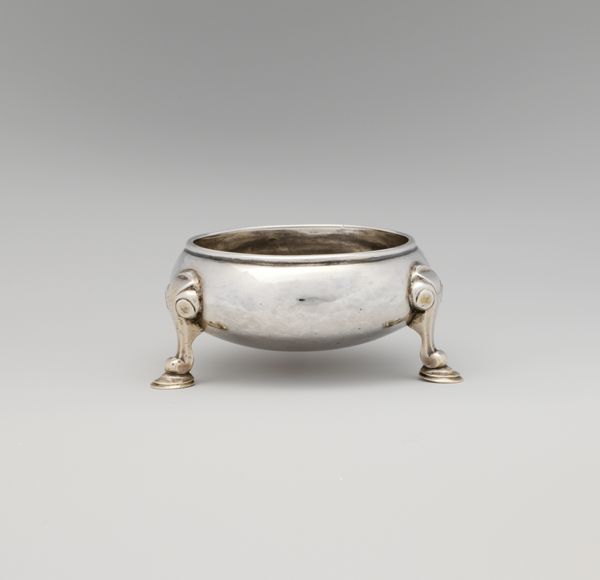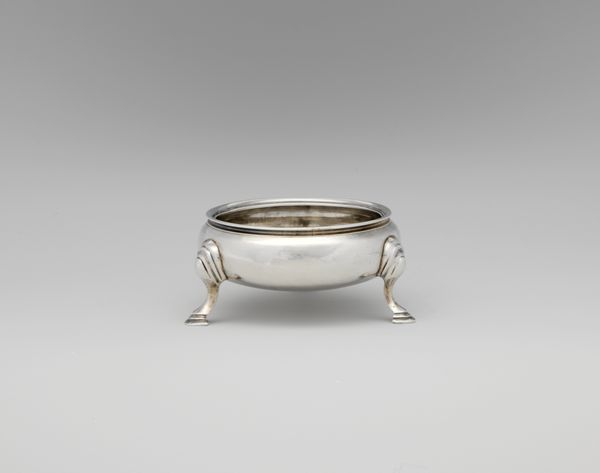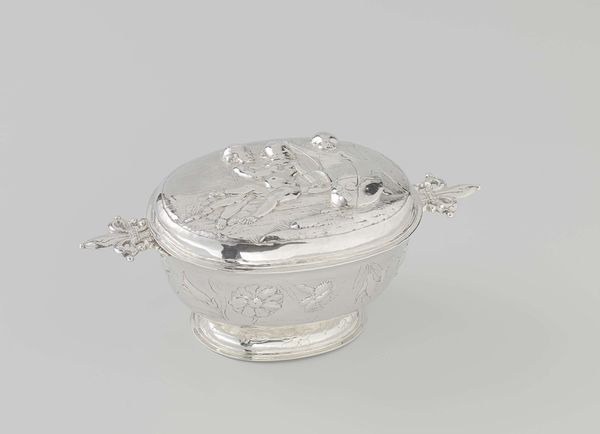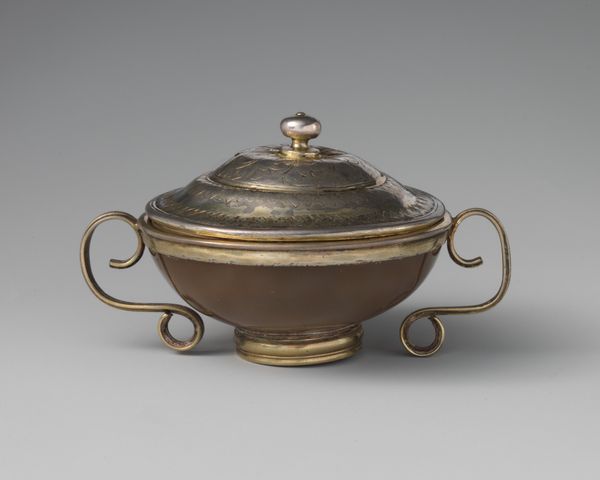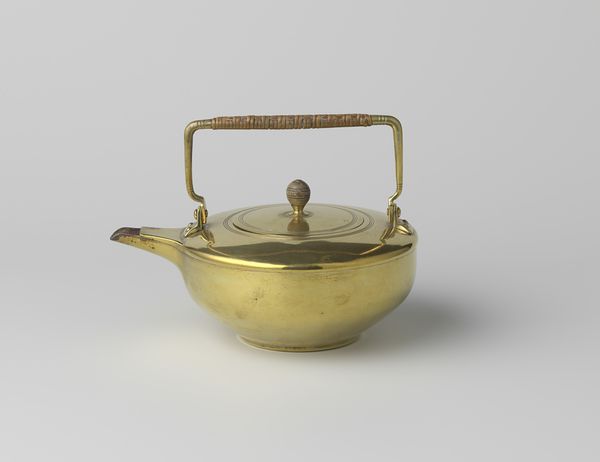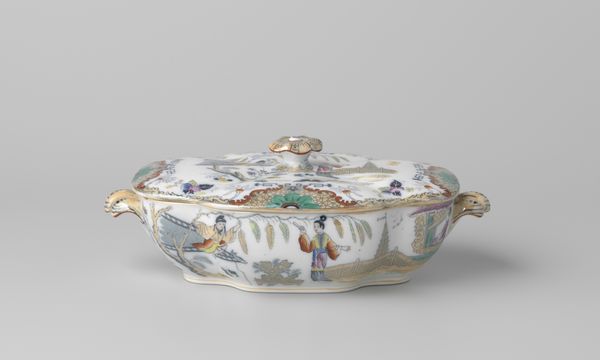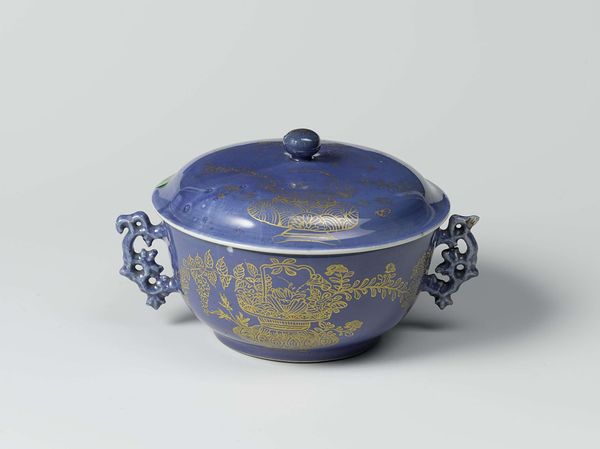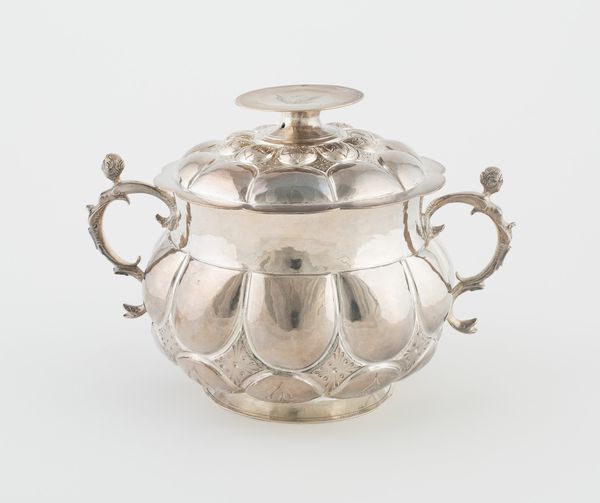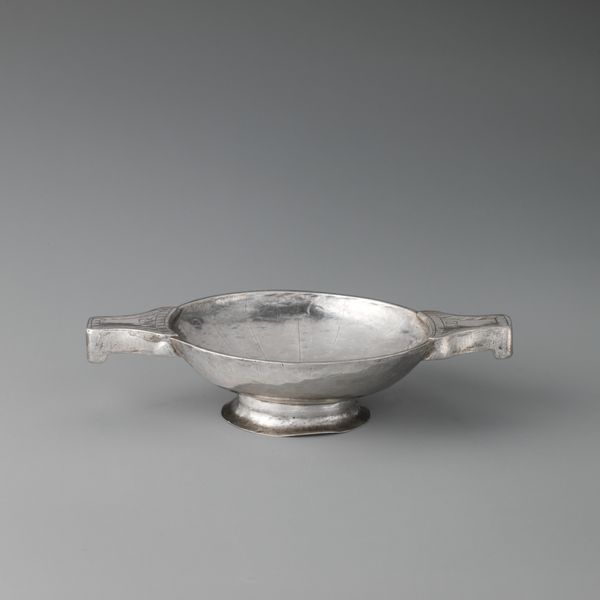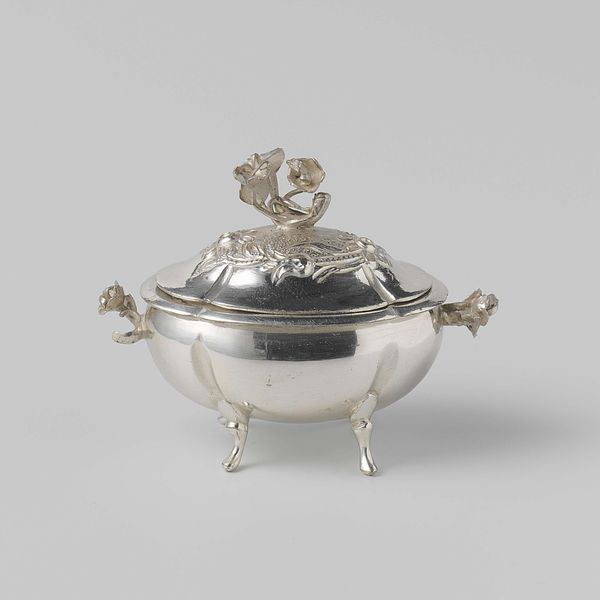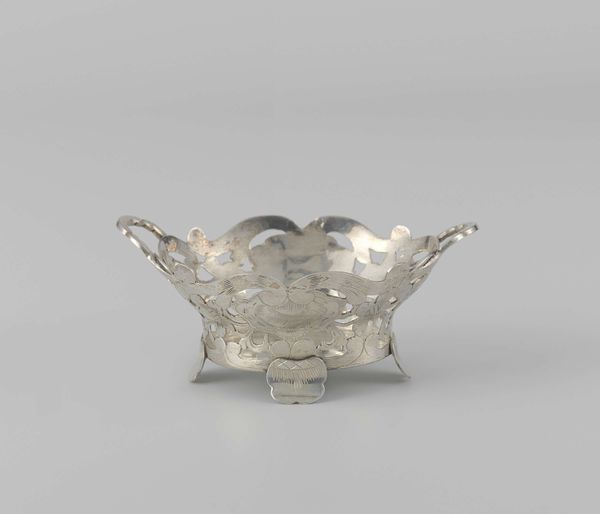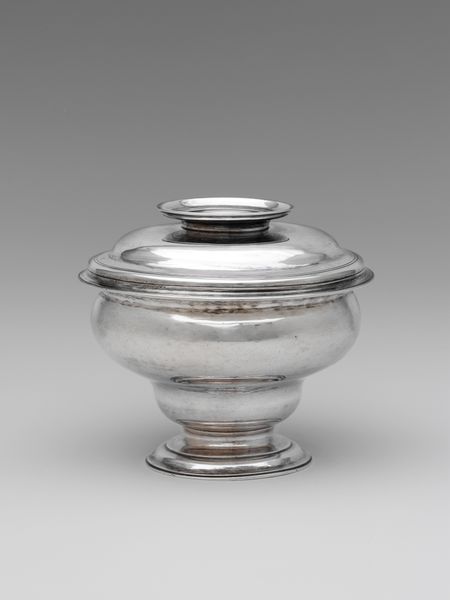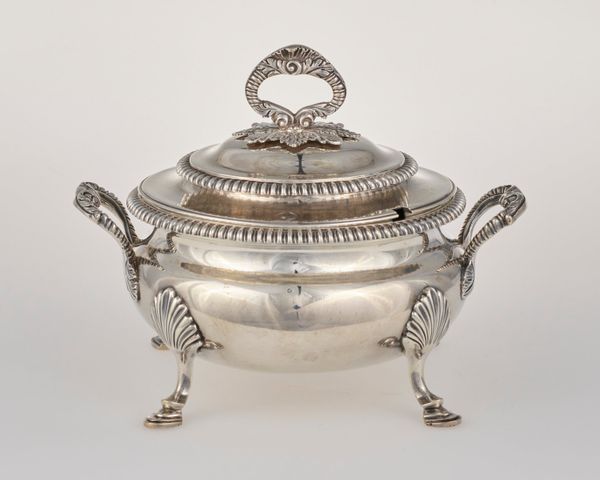
metal
#
product studio photography
#
3d sculpting
#
art-nouveau
#
3d printed part
#
metal
#
retro 'vintage design
#
product design photgrpaphy
#
prop product design
#
metallic object render
#
product photography
#
decorative-art
#
disk design
#
product render
Dimensions: height 8.6 cm, width 11 cm, diameter 9.7 cm, weight 339 gr
Copyright: Rijks Museum: Open Domain
Curator: This is the Suikerpot, a sugar bowl made around 1905 by Orivit. The material appears to be a base metal, likely pewter or Britannia metal, with a silver plating, typical for Art Nouveau metalwork of that period. Editor: It has such an understated elegance. The form is simple, yet the stylized leaf motifs bring a sense of naturalism and refinement. It evokes a sense of early 20th-century bourgeois domesticity. Curator: Exactly. These objects weren't just functional; they were statements of taste and class. The means of production here— die-stamping and electroplating — speak to the rise of industrial processes and their impact on decorative arts. Notice how mass production techniques democratized access to items that emulated the expensive look of silverware for wider audiences. Editor: That’s interesting, to consider its social reach through production methods. Beyond that, this piece seems part of a broader Arts and Crafts critique aimed at injecting beauty into everyday life and challenging the dehumanizing aspects of industrialization, wouldn’t you say? Curator: Yes, but I think the Suikerpot presents more of a negotiation than a stark opposition. It blends handcrafted sensibilities with machine-made precision. It embodies the tensions between pre-industrial ideals and the reality of mechanized manufacturing. Orivit was responding to consumer demand for affordable yet stylish household goods. Editor: And that makes me wonder, who had access to this “affordable” style? Though perhaps cheaper than solid silver, items like this still signalled aspirations for upward mobility—commodifying the aesthetics of leisure and the idealized vision of domestic femininity bound up in serving tea and refined sugar. Curator: True. Examining pieces like the Suikerpot prompts us to consider design as both an artistic endeavor and a commercial enterprise. It reveals how material choices and methods of fabrication mediate aesthetic values and shape social meaning. Editor: Well said. I leave appreciating how objects like this reveal larger narratives about industrial change, consumption, and social identity encoded in the design and execution of something as simple as a sugar bowl. Curator: Precisely. These objects, often overlooked, encapsulate pivotal shifts in labor, technology, and the material culture of everyday life.
Comments
No comments
Be the first to comment and join the conversation on the ultimate creative platform.
